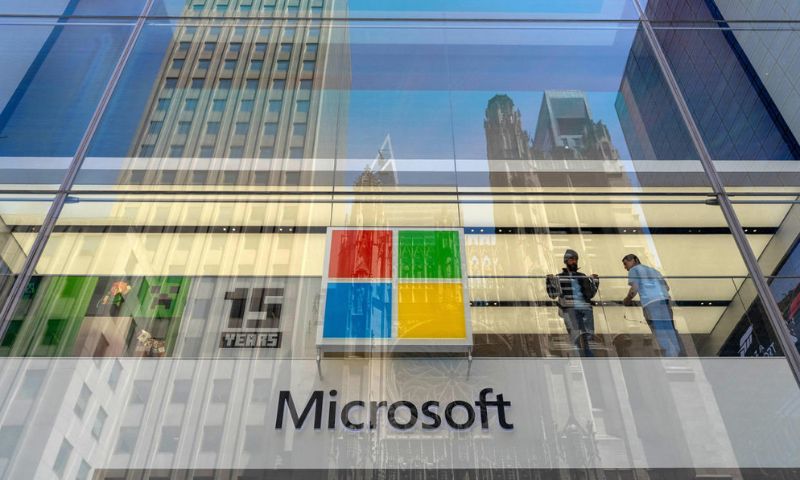Tech giant’s president Brad Smith sets out roadmap for US AI development, focusing on infrastructure, workforce training and global competition.
The global AI sector faces increasing pressure to balance rapid technological advancement with regulatory compliance, infrastructure development and workforce preparation. Nations and technology companies are investing in AI capabilities while grappling with concerns about technological sovereignty and market competition.
Against this backdrop, Microsoft has unveiled plans to invest US$80bn in AI-enabled data centres globally in 2025, with over half of this investment to be allocated to its facilities in the United States.
The investment forms part of a strategic vision outlined in a blog by Brad Smith, Vice Chair and President of Microsoft, which addresses US competitiveness in AI development against rising international competition.
This announcement arrives as China advances its state-directed AI initiatives and the European Union implements its AI Act, establishing the first comprehensive regulatory framework for artificial intelligence development and deployment.
Microsoft focuses on AI infrastructure development
The investment comes as nations develop frameworks for AI regulation, with the European Union implementing its AI Act while China pursues state-directed AI initiatives through its 14th Five-Year Plan, which emphasises technological self-sufficiency.
Brad positions AI as a General-Purpose Technology (GPT) – innovations that drive productivity across multiple sectors, similar to electricity or computer chips. “In contrast to single-purpose products, GPTs boost innovation and productivity across the economy,” he says. “Ironworking, electricity, machine tooling, computer chips and software all rank among history’s most impactful GPTs.”
The Microsoft president also draws parallels between AI’s potential impact and previous industrial revolutions, suggesting it could create new employment across manufacturing, transportation, agriculture and government sectors.
KEY FACTS:
- Microsoft plans to invest $80bn in AI-enabled datacentres globally with over half in the US
- The company aims to train 2.5 million Americans in AI skills during 2025
- Microsoft emphasises building trustworthy AI that prioritises cybersecurity, privacy and digital safety
Microsoft advocates increased funding for the National Science Foundation and university research programmes, building on initiatives from President Trump’s first term, which included a 2019 executive order to strengthen US AI capabilities.
Microsoft and OpenAI partnership shapes US talent strategy
Microsoft’s relationship with OpenAI demonstrates the strength of private sector innovation in US AI development, according to Brad. He references emerging AI companies including Anthropic, which develops large language models, and xAI, which focuses on AI safety research.
“America’s technological strength has always been rooted in the private sector. Today, the US leads the global AI race thanks to the investment of private capital and innovations by American companies of all sizes, from dynamic start-ups to well-established enterprises,” he says.
The plan includes training 2.5 million US students, workers and community members in AI skills during 2025. Microsoft has established partnerships with community colleges, workforce agencies and organisations including 4-H and Future Farmers of America to extend AI education across rural communities.
The National AI Consortium for Community Colleges will provide industry-aligned AI curriculum and faculty training through AI Bootcamps as part of this initiative.
Competition with China drives international strategy
Competition from China’s AI sector represents a key factor in international markets. “Even more critically, the rapid development of China’s AI sector has heightened competition between American and Chinese AI, with much of this likely to play out during the next four years in international markets around the world,” says Brad.
He references Trump’s 2019 executive order, which emphasised the need to “promote an international environment that opens markets for American AI industries while protecting our technological advantage in AI and protecting our critical AI technologies from acquisition by strategic competitors and adversarial nations.”
The telecommunications industry provides lessons for AI deployment, according to Smith, where Chinese companies gained market share in developing nations through government support and technological innovation. This led to US government concerns regarding Chinese 5G technology deployment.
Government and private sector collaboration
Brad advocates for integration between government agencies, private enterprises and educational institutions. “Our strong educational system can spread new AI skills to work that will energise our economy,” he comments. “Technology platforms and non-profits can help people use AI to enhance their careers. We have the world’s most dynamic business sector that excels in adopting new technology.”
He notes that government efficiency could improve through AI adoption. “If the Trump Administration can develop a strong national AI talent strategy and use AI to make the government itself more effective and efficient, it will put the country on a promising path.”
Brad notes China’s strategy of offering subsidised access to semiconductor chips and promises to construct AI datacentres in developing nations. “The key to the future is to bring together the best of what we can offer across American society, from across our private sector, educational and non-profit institutions and government.”



